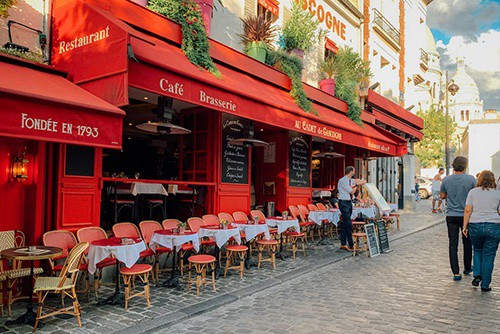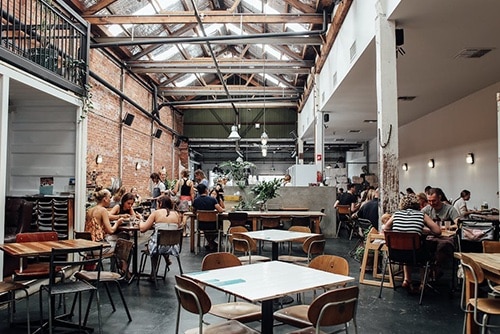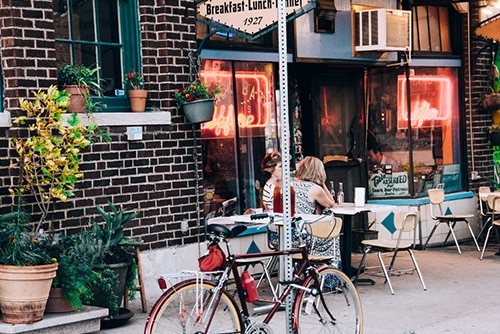Ask 10 people, “What is a bistro?” and you’re likely to get 10 different answers. That’s because the concept has evolved since its inception in France more than 200 years ago and then changed even further when it was introduced in the United States.
In this article, we give you the definitive answer to the question, “What is a bistro?” and discuss how it differs from a restaurant and other types of food-service establishments.
Bistro restaurants are a type of restaurant that is becoming increasingly popular. They are typically small, intimate restaurants that offer a menu of French or Italian cuisine. Bistros often have a casual atmosphere, and they are usually less expensive than other types of restaurants.

Bistro vs. fast food
Fast food restaurants are significantly less formal than bistros and usually focus on price, convenience, and speed.
In the majority of cases, patrons order fast food at a counter, and the ingredients (often preheated or precooked) are assembled quickly and delivered over the counter or through a drive-thru window.
After they have their food, customers can take it to go or seat themselves and eat in-house.
At a bistro, patrons will usually be seated by a host or hostess, and the food they order will be prepared more or less from scratch like in a more formal, fine-dining restaurant.
Turnover is still an important variable in the bistro concept, but it’s not given as high a priority as it is in the fast food model. Bistros tend to focus more on higher-quality cuisine and less on getting patrons in and out the door.

While both bistros and cafes provide fairly simple, moderately priced food and drinks to a small dining room, bistros tend to serve full meals to diners who eat at their tables.
Cafes typically serve snacks, cakes, desserts, and other basic fare that can be consumed fairly quickly or even taken on the go. In many cases, diners order food at a counter, pay on the spot, and serve themselves, so the cafe model does not require a large staff of servers.
Bistros and cafes also differ in the way patrons use the facilities. Bistros function more like the typical restaurant where customers are seated, eat, and then leave.
Cafes function more like the typical coffee shop where customers spend more time eating, reading, working, or just hanging out with their friends.
If you arranged the various types of restaurants on a ladder scale based on menu style, preparation method, pricing, seating options, and means by which the food is served, the cafe would fall somewhere between fast food and the bistro (with bistro being higher up the scale).
What is a bistro?

No one is sure where the term “bistro” actually came from.
Some linguists and etymologists theorize that the word began its life as a term of encouragement (or, some might say, complaint) during the Russian occupation of Paris at the end of the Napoleonic Wars (1803-1815).
According to this theory, Russian soldiers used a Slavic word pronounced like “bystry” — which means “quick” or “hurry” — to demand that their food be produced as soon as possible. The term stuck, and restaurants that served simple food quickly became known as bistros.
Nowadays, this theory is largely apocryphal, and linguists and etymologists cite the fact that the word “bistro” doesn’t appear in print until the late 19th century, 60-75 years later.
As an alternative, they posit that the term is a disambiguation of other French words — some of which are no longer used — including bistrot, bistingo, bistraud, bistouille, and bistroulile.
While the term “bistro” may have entered the French language much later, the concept of the bistro did originate in the early part of the 19th century.
It was conceived as a type of perk that a landlord might run out of the basement of an inn or apartment in order to increase their income. Guests, renters, and the public were welcome, and the food was simple and made with ingredients that could be stored easily for a day or two.
As the concept evolved — and eventually crossed the pond — it came to be characterized by three variables: food, price, and formality.

A modern bistro may serve any type of food, but they most commonly offer either locally inspired dishes or traditional French cuisine.
Regardless of the fare they choose, bistros tend to serve smaller, more modest portions — typically because they operate out of smaller locations and serving large meals to large groups would be impossible.
Those modest portions are also moderately priced in order to be accessible to a wide variety of diners and usually fall within the low to mid-level range.
Finally, bistros are less formal than more upscale establishments and are meant to be fairly plain, welcoming, and easy-going.
When restaurateurs began opening bistros in the United States, the format evolved even further to include more refined decor, fewer tables, finer foods, and higher prices.
Today, most bistro owners don’t define their restaurant as “fine dining” per se. Instead, they define what they offer as classy (and classic) fare in an upscale atmosphere.
10 French Dishes Served in Restaurants in Paris (EXPLAINED)
FAQ
What makes something a bistro?
What is the difference between a bistro and a cafe?
What does bistro offer?
What type of food is served at a bistro?
What food is served in a bistro?
Provençal vegetable stew, grilled ham, roasted chicken, fried egg, and steak frites (otherwise known as grilled steak and crispy fried potatoes) are all popular food dishes served in a bistro. Even if bistro restaurants have French origins, some modern bistros don’t necessarily need to serve French cuisine.
What is the best food for breakfast and dinner?
For breakfast, I recommend an avocado toast with egg and fruit to go with it, it’s a very complete meal and full of nutrients. For dinner, something lighter is recommended, such as cooked vegetables, purees or soups, accompanied by a lighter protein as well, such as fish or chicken.
What is bistro cuisine?
Bistro cuisine typically features creative, healthy versions of traditional French dishes. Often served in a bistro, or small cafe, this casual, contemporary cuisine frequently consists of ample portions and is often accompanied by wine. A key feature in its preparation is the use of fresh, local produce.
What makes a good Bistro?
A bistro is primarily concerned with serving meals that strike a balance between gourmet and comfort, crafting an experience that brings people back time and again. Type of Food Served: The kind of food served at a bistro is one of its defining traits. Bistros tend to serve either traditional French cuisine or simple, hearty food.
